Technical Program
Conference Program
Program in PaperPlaza
Videos related to some of the papers
Tuesday, October 3, 2017
Wednesday, October 4, 2017
Thursday, October 5, 2017
Plenary Speakers
Prof. Tor Arne Johansen
Center for Autonomous Marine Operations and Systems (NTNU-AMOS)
Department of Engineering Cybernetics
Norwegian University of Science and Technology (NTNU), Trondheim, Norway
Increasing the Operational Window of Unmanned Aerial Systems
Unmanned Aerial Systems (UAS) are increasingly more capable and used in several challenging operational environments, also for commercial and industrial applications. Still, most systems have strong limitations in their capability to operating in coastal, maritime and arctic environments that are characterized by rather extreme requirements for range and endurance, strong and turbulent winds, high humidity, low temperature, rain, snow, icing, requirements to operate from ships, and very limited infrastructure for radio communication, navigation, takeoff and landing. The presentation will give an overview of current research and Beyond-Line-of-Sight (BLOS) field tests at NTNU’s UAV-lab, emphasizing ship-based recovery, icing mitigation, aerodynamic performance monitoring, and robust high-performance radio communication and navigation.

Tor Arne Johansen
Biography
Tor Arne Johansen received the MSc degree in 1989 and the PhD degree in 1994, both in electrical and computer engineering, from the Norwegian University of Science and Technology, Trondheim, Norway. From 1995 to 1997, he worked at SINTEF as a researcher before he was appointed Associated Professor at the Norwegian University of Science and Technology in Trondheim in 1997 and Professor in 2001. He has published several hundred articles in the areas of control, estimation and optimization with applications in the marine, automotive, biomedical and process industries. In 2002 Johansen co-founded the company Marine Cybernetics AS where he was Vice President until 2008. Prof. Johansen received the 2006 Arch T. Colwell Merit Award of the SAE, and is currently a principal researcher within the Center of Excellence on Autonomous Marine Operations and Systems (AMOS) and director of the Unmanned Aerial Vehicle Laboratory at NTNU.
Mr. Vince Socci
IEEE AESS UAV/UAS Technical Panel Chair, National Instruments RTT BDM
USA
IEEE’s Leadership Role in UAV Technology, Regulations, and Applications
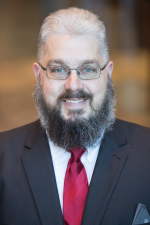
Vince Socci
IEEE is the world’s largest global technical society, with nearly half a million members who influence industry, academia, and government. UAS technology and applications are advancing at such a rapid rate, that operator regulations and public education are struggling to keep up. IEEE has stepped in to support technology advancement, commercial application development, regulatory guidelines, and public awareness. This session will outline IEEE’s growing role in the UAS community and the potential for IEEE members to lead the evolution of UAS technology, regulations, and applications. Current programs and initiatives will be described. Opportunities to influence the UAS industry and impact the public will be shared. Participants will come away inspired to engage with the UAS community through IEEE leadership.
Biography
Vince Socci is a real-time test business development manager at National Instruments. He provides business and technical support for customers in vehicle platform hardware-in-the-loop applications. With over 25 years of experience in aerospace, automotive, power electronics, and medical systems, he has engineering systems in the most complex applications. His specialized areas of interest are embedded controls, real-time test, and systems engineering. He holds a BS in electrical engineering, MS in electrical engineering and MBA in technology management. Socci has served on the IEEE Board of Directors, and governing boards of several IEEE societies, SAE, and PMI. He is a certified PMP.
Dr. Ola Härkegård
UMS Skeldar, Linköping, Sweden
Skeldar V-200 under the hood
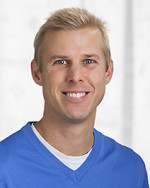
Ola Härkegård
Skeldar V-200 is a rotary-wing unmanned aerial system developed by UMS Skeldar, a joint venture between Saab and the UMS Group. In this talk we take a look under the hood of the V-200 regarding hardware and software architectures as well as algorithms and tools used for control design, signal processing, modelling and simulation. Also, challenges and opportunities of this type of unmanned vehicle are discussed.
Biography
In 2003, Ola Härkegård received his PhD in automatic control from Linköping University. In 2005, he joined Flight Control Division at Saab where he worked with the development of flight control systems for aircraft such as Gripen, Skeldar and the Saab/Boeing T-X jet trainer. In 2012 he was appointed Technical Fellow in Flight Control Design at Saab. Since 2016 he is working at UMS Skeldar, a joint venture between Saab and Switzerland based UMS Group.
Keynote speakers
Prof. Kin Huat Low
Principal Investigator of the TM-UAS (Traffic Management on Unmanned Aircraft Systems) Program
School of Mechanical and Aerospace Engineering, Nanyang Technological University, Singapore
Urban Traffic Management Framework for Operations of Unmanned Aircraft Systems
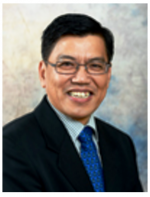
Kin Huat Low
Civilian and commercial demands for various applications using unmanned aircraft (also known as drones) have greatly increased in the recent years. A fleet of drones flying and operating different tasks over the same airspace is possible in the near future. Therefore, a framework for unmanned aircraft systems traffic management (UTM) focusing the safe and efficient operations of drones is the main focus of the present talk. Issues, possible approaches, safety and weight threshold study, current and future R&D works for uTM-UAS (urban traffic management on UAS) will be presented and discussed in the presentation.
Biography
K. H. Low (Kin Huat Low) received MSc and PhD degrees, both in Mechanical Engineering, from the University of Waterloo in Canada. After the PhD degree, he worked at the same university as a postdoctoral fellow. He has then joined Nanyang Technological University (NTU) in Singapore since 1988. He is currently a professor in the School of Mechanical and Aerospace Engineering, NTU. Kin Huat has published about 300 articles in the areas of robotics, dynamics and control of UAVs, machine and mechanism designs, vibration and impact analyses. He is leading several major multi-disciplinary research programs. He has collaborated with professors in several renowned universities through research visits and research projects. Kin Huat serves as associate editorship for several journals. He has also chaired numerous committees and workshops.
Prof. Patrick Doherty
Artificial Intelligence and Integrated Computer Systems Division
Department of Computer and Information Science
Linköping University, Sweden
Leveraging Heterogeneous UAV Capabilities through Delegation and Planning in Emergency Rescue Applications
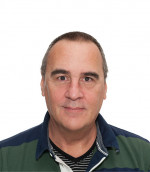
Patrick Doherty
After several decades of research development, we are now experiencing widespread use of unmanned aircraft in both the civil and commercial sectors. Much of the focus of previous research has been on conventional autonomy which targets autonomous flight, navigation and sensor capabilities. New application areas, such as package delivery and emergency rescue response are making it increasingly clear that additional levels of autonomous capability will be required, in particular, shared autonomy between human operators and teams of heterogeneous unmanned aircraft systems. In this talk, I will present a delegation-based collaborative robotics framework that can be used with teams of robots and humans to leverage their distinct capabilities in solving complex mission goals. As a test case, the delegation system has been integrated with larger RMAX helicopter systems (100kg) and smaller LinkQuad quadrotor systems (2kg) developed in our research lab, in addition to solar powered fixed wing craft developed at ETH Zurich and used in a larger EU project targeted for alpine rescue. These unmanned aircraft systems are autonomous and can collaborate with both humans and other robotic systems through use of the delegation framework. A number of applications of these ideas will be demonstrated using 3D mapping missions and surveillance missions in the Italian alps with teams of unmanned aircraft and humans.
Biography
Patrick Doherty is a Professor of Computer Science at the Department of Computer and Information Sciences (IDA), Linköping University, Sweden. He heads the Artificial Intelligence and Integrated Computer Systems Division at IDA. He is an ECCAI/EurAI fellow and also Editor-in-Chief of the Artificial Intelligence Journal. He has over 25 years of experience in areas such as knowledge representation, automated planning, intelligent autonomous systems and multi-agent systems. A major area of application is with Unmanned Aircraft Systems. He has over 175 refereed scientific publications in his areas of expertise and has given many keynote and invited talks at leading international conferences. He is also CEO of a start-up company, UAS Technologies Sweden AB, which designs and markets Micro-Aerial Vehicles and unmanned aircraft functionalities.
Prof. Robert Dahlgren
Sr. Scientist, CSUMB/NASA Ames Research Center
Adjunct Faculty, CSUMB/School of Natural Science
USA
Educational projects in unmanned aerial systems at the NASA Ames Research Center
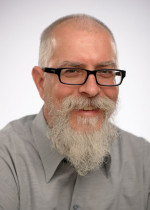
Robert Dahlgren
Unmanned aerial systems (UAS), autonomy and robotics technology have been fertile ground for developing a wide variety of interdisciplinary student learning opportunities. In this talk several projects will be described that leverage small fixed-wing UAS that have been modified to carry science payloads. These aircraft provide a unique hands-on experience for a wide range of students from college juniors to graduate students pursuing degrees in electrical engineering, aeronautical engineering, mechanical engineering, applied mathematics, physics, structural engineering and other majors. By combining rapid prototyping, design reuse and open-source philosophies, a sustainable educational program has been organized structured as full-time internships during the summer, part-time internships during the school year, short details for military cadets, and paid positions. As part of this program, every summer one or more UAS is developed from concept through design, build and test phases using the tools and facilities at the NASA Ames Research Center, ultimately obtaining statements of airworthiness and flight release from the Agency before test flights are performed. In 2016 and 2017 student projects focused on the theme of 3D printed modular airframes that may be optimized for a given mission and payload. Now in its fifth year this program has served over 35 students, and has provided a rich learning experience as they learn to rapidly develop new aircraft concepts in a highly regulated environment, on systems that will support principal investigators at university, NASA, and other US federal agencies.
Biography
Robert P. Dahlgren received the B.Sc. degree in electrical engineering from the University of Minnesota, Minneapolis, MN, USA, the M.Sc. degree in aeronautics and astronautics from MIT, Cambridge, MA, USA, a second M.Sc. degree in physics from San José State University, San José, CA, USA, and the Ph.D. degree in electrical engineering from the University of California, Santa Cruz, CA, USA. Robert has worked for a diverse range of companies including the SETI Institute, Sperry Aerospace, Fujikura Technology America, and the Charles Stark Draper Laboratory. He is currently employed as a Sr. Scientist at the California State University Monterey Bay (CSUMB) at the NASA Ames Research Center in Mountain View, CA in the Biospherics Science Branch, Earth Science Division. He is the author or co-author of over forty papers, presentations and patents.
Detailed Conference Program
Tuesday, October 3, 2017
9:00-9:30 Opening Session, Spegelsalen
9:30-10:30 Plenary: Tor Arne Johansen, Spegelsalen
10:30-11:00 Coffee Break
11:00-12:00 Session: Path Planning 1, Spegelsalen
| 11:00-11:15 | Self Triggered Time Coordinated Deployment Strategy for Multiple Relay UAVs to Work As a Point-To-Point Communication Bridge | Braga, Juan (University of Porto); Jain, Praveen (University of Porto); Aguiar, A. Pedro (Faculty of Engineering, University of Porto (FEUP)); Sousa, João (Universidade Porto - Faculdade Engenharia) |
| 11:15-11:30 | Navigation Strategy for In-Flight Retrieving and Transportation Operations for a Rotorcraft MAV | Escareno, Juan-Antonio (Institut Polytechnique de Sciences Avancées (IPSA)); Castillo Zamora, José de Jesús (Instituto Tecnológico de Celaya); ABASSI, Wafik (IPSA); Flores, Gerardo (Center for Research in Optics); Camarillo-Gómez, Karla Anhel (Instituto Tecnológico de Celaya) |
| 11:30-11:45 | Outline of a System for Integrated Adaptive Ice Tracking and Multi-Agent Path Planning | Olofsson, Jonatan (Norwegian University of Science and Technology); Veibäck, Clas (Linköping University); Hendeby, Gustaf (Linköping University); Johansen, Tor Arne (Norwegian University of Science and Technology) |
| 11:45-12:00 | Optimal Autonomous Quadrotor Navigation in an Obstructed Space | Giulietti, Fabrizio (University of Bologna); Pipeleers, Goele (KU Leuven); Rossetti, Gianluca (University of Bologna); Van Parys, Ruben (KU Leuven) |
12:00-13:15 Lunch
13:15-14:45 Session: Path Planning 2, Spegelsalen
| 13:15-13:30 | Optimal Path of a UAV Engaged in Wind-Influenced Circular Towing | Merz, Mariann (Norwegian University of Science and Technology); Johansen, Tor Arne (Norwegian University of Science and Technology) |
| 13:30-13:45 | Real Time Optimal Path Generation with Mission and Vehicle Maneuvering Constraints | Cuciniello, Giovanni (Italian Aerospace Research Center); Corraro, Federico (Italian Aerospace Research Center); Morani, Gianfranco (Italian Aerospace Research Centre); Garbarino, Luca (Cira) |
| 13:45-14:00 | Contingency Path Planning for Hybrid-Electric UAS | Anthony, Hovenburg (Maritime Robotics AS); de Alcantara Andrade, Fabio Augusto (Norut, Northern Research Institute); Dahlin Rodin, Christopher (Norwegian University of Science and Technology / Maritime Roboti); Johansen, Tor Arne (Norwegian University of Science and Technology); Storvold, Rune (Norut, Northern Research Institute) |
| 14:00-14:15 | Aerial Robot Coverage Path Planning Approach with Concave Obstacles in Precision Agriculture | Pham, The Hung (Laboratoire Informatique, biologie intégrative et systèmes compl); Bestaoui, Yasmina (University of Evry) 103892; Mammar, Saïd (IBISC) |
| 14:15-14:30 | Obstacle Avoidance System Development for the Ardrone 2.0 using the tum_ardrone Package | d'Apolito, Francesco (Austrian Institute of Technology); Sulzbachner, Christoph (AIT Austrian Institute of Technology) |
| 14:30-14:45 | Path Tracking for Waypoint Lists Based on a Pure Pursuit Method for Fixed Wing UAS | Balampanis, Fotios (Universidad de Sevilla); Aguiar, A. Pedro (Faculty of Engineering, University of Porto (FEUP)); Maza, Ivan (University of Seville); Ollero, Anibal (University of Seville) |
14:45-15:15 Coffee Break
15:15-16:00 Keynote: Kin Huat Low, Spegelsalen
16:00-17:00 Session: Simulation, Spegelsalen
| 16:00-16:15 | Modelling and Control of Helicopter Robotic Landing Gear for Uneven Ground Conditions | Melia Boix, Daniel (Edinburgh Napier University); Goh, Keng (Edinburgh Napier University); McWhinnie, James (Edinburgh Napier University) |
| 16:15-16:30 | Impact of Atmospheric Icing on UAV Aerodynamic Performance | Hann, Richard (NTNU); Wenz, Andreas Wolfgang (Norwegian University of Science and Technology); Gryte, Kristoffer (Norwegian University of Science and Technology); Johansen, Tor Arne (Norwegian University of Science and Technology) |
| 16:30-16:45 | Maritime Application of Ducted-Fan Flight Array System: Decoy for Anti-Ship Missile | Jeong, Junho (Chungnam National University); Yu, Beomyeol (the Department of Aerospace Engineering, Chungnam National Unive); Kim, Taegyun (Chunam National University); Kim, Seungkeun (Chungnam National University); Suk, Jinyoung (Chungnam National University); Oh, Hyondong (UNIST) |
| 16:45-17:00 | On Simulation-Based Adaptive UAS Behavior During Jamming | Johansson, Ronnie (Swedish defence research agency); Hammar, Peter (Swedish defense research agency); Thorén, Patrik (Swedish defense research agency) |
Wednesday, October 4, 2017
09:00-10:00 Plenary: Vince Socci, Spegelsalen
10:00-10:30 Session: Airspace Management, Spegelsalen
| 10:00-10:15 | Blockchain-Based Protocol of Autonomous Business Activity for Multi-Agent Systems Consisting of UAVs | Kapitonov, Aleksandr (ITMO University); Lonshakov, Sergei (Airalab); Krupenkin, Alexander (Airalab); Berman, Ivan (ITMO University) |
| 10:15-10:30 | Regulation Analysis and New Concept for a Cloud-Based UAV Supervision System in Urban Environment | Capello, Elisa (Politecnico di Torino CNR IEIIT); Dentis, Matteo (Politecnico di Torino); Novaro Mascarello, Laura (Politecnico di Torino); Primatesta, Stefano (Politecnico di Torino) |
10:30-11:00 Coffee Break
11:00-12:00 Session: Control Architectures 1, Spegelsalen
| 11:00-11:15 | Group Control and String Stability for UAV Kinematic and Dynamic Models | Arogeti, Shai (Ben-Gurion University); Ailon, Amit (Ben Gurion University of the Negev) |
| 11:15-11:30 | Qualitative Analysis of Guidance and Control Methods for Wind Gradients Exploitation with Small Fixed Wing UAS | Rodriguez Salazar, Leopoldo (Universidad de Sevilla); Cobano, Jose A. (University of Seville); Ollero, Anibal (University of Seville) |
| 11:30-11:45 | Full-Envelope, Six-Degrees-Of-Freedom Trim Analysis of Unmanned Aerial Systems Based on Piece-Wise Polynomial Aerodynamic Coefficients | Cunis, Torbjørn (ONERA -- The French Aerospace Lab); Condomines, Jean-Philippe (ENAC University); Burlion, Laurent (Onera -The French Aerospace Lab) |
| 11:45-12:00 | Using Multirotor Drones in Engineering of Systems Curricula | Yakimenko, Oleg (Naval Postgraduate School) |
12:00-13:15 Lunch
13:15-14:45 Session: Navigation, Spegelsalen
| 13:15-13:30 | Two Imaging Systems for Positioning and Navigation | Grönwall, Christina (Swedish defence research agency); Rydell, Joakim (Swedish defence research egency); Tulldahl, Michael (Swedish defence research agency); Zhang, Erik (Saab Aeronautics); Bissmarck, Carl Fredrik (Swedish Defence Research Agency (FOI)); Bilock, Erika (Swedish defence research agency) |
| 13:30-13:45 | A Vision-Based Approach for Autonomous Landing | Cabrera Ponce, Aldrich Alfredo (Instituto Tecnológico Superior de Atlixco); Martinez-Carranza, Jose (Instituto Nacional de Astrofisica, Optica y Electronica) |
| 13:45-14:00 | Autonomous Indoor Navigation of a Stock Quadcopter with Off-Board Control | Garcia, Adriano (Binghamton University); Ghose, Kanad (State University of New York, Binghamton) |
| 14:00-14:15 | Navigation of UAV Using Phased Array Radio | Albrektsen, Sigurd M (Norwegian University of Science and Technology); Sægrov, Atle (Radionor Communications); Johansen, Tor Arne (Norwegian University of Science and Technology) |
| 14:15-14:30 | Real-Time Aerial Image Mosaicing Using Hashing-Based Matching | de Lima, Roberto (INAOE); Martinez-Carranza, Jose (Instituto Nacional de Astrofisica, Optica y Electronica) |
| 14:30-14:45 | Keeping a Moving Target within the Field of View of a Drone's Onboard Camera Via Stochastic Estimation | Hernández, Beatriz (INSTITUTO NACIONAL DE ASTROFÍSICA, ÓPTICA Y ELECTRÓNICA); Martinez-Carranza, Jose (Instituto Nacional de Astrofisica, Optica y Electronica); Rangel-Magdaleno, Jose (INAOE) |
14:45-15:15 Coffee Break
15:15-16:00 Keynote: Patrick Doherty, Spegelsalen
16:00-17:15 Session: Autonomy, Spegelsalen
| 16:00-16:15 | A Game-theoretical Approach to Heterogeneous Multi-Robot Task Assignment Problem with Minimum Workload Requirements | Jang, Inmo (Cranfield University); Shin, Hyo-Sang (Cranfield University); Tsourdos, Antonios (Cranfield University) |
| 16:15-16:30 | Autonomous Landing and Go-Around of Airliners under Severe Weather Conditions Using Artificial Neural Networks | Baomar, Haitham (University College London); Bentley, Peter (University College London) |
| 16:30-16:45 | Person Classification Leveraging Convolutional Neural Network for Obstacle Avoidance Via Unmanned Aerial Vehicles | Junoh, Shahmi (Cranfield University); Aouf, Nabil (Cranfield University) |
| 16:45-17:00 | Generalized Software Application for Operation of a 3d Vehicle in Air, Water and Land | Peres, Diogo (ISCTE-IUL); Raimundo, António (ISCTE-IUL); Santos, Nuno (ISCTE-IUL); Sebastião, Pedro (ISCTE-IUL); Souto, Nuno (ISCTE-IUL) |
| 17:00-17:15 | Frequency Channel Assignment for Networked UAVs using a Hedonic Game | Shin, Hyo-Sang (Cranfield University); Jang, Inmo (Cranfield University); Tsourdos, Antonios (Cranfield University) |
Thursday, October 5, 2017
09:00-10:00 Plenary: Ola Härkegård, Spegelsalen
10:00-10:30 Coffee Break
10:30-12:00 Session: Sensor Systems, Spegelsalen
| 10:30-10:45 | Fusion of Stereo and Lidar Data for Dense Depth Map Computation | Courtois, Hugo (Cranfield University); Aouf, Nabil (Cranfield University) |
| 10:45-11:00 | Vertical Modeling of a Quadcopter for Mass Estimation and Diagnosis Purposes | Ho, Duc Du (Linköping University); Linder, Jonas (Linköping University); Hendeby, Gustaf (Linköping University); Enqvist, Martin (Linköping University) |
| 11:00-11:15 | Hand Gesture Recognition with Convolutional Neural Networks for the Multimodal UAV Control | MA, YUNTAO (Imperial College London); Liu, Yuxuan (Imperial College London); Jin, Ruiyang (Imperial College London); Yuan, Xinyang (Imperial College London); Sekha, Raza (Imperial College London); Wilson, Samuel (Imperial College London); Vaidyanathan, Ravi (Imperial College London) |
| 11:15-11:30 | Ultra-Wide Band Real Time Location Systems: Practical Implementation and Performance Evaluation | Cisek, Krzysztof Piotr (Norwegian University of Science and Technology); Zolich, Artur Piotr (Norwegian University of Science and Technology); Klausen, Kristian (Norwegian University of Science and Technology); Johansen, Tor Arne (Norwegian University of Science and Technology) |
| 11:30-11:45 | Efficient Real-Time Video Stabilization for UAVs Using Only IMU Data | Odelga, Marcin (Max Planck Institute for Biological Cybernetics; University of T); Kochanek, Nicholas (Harvard University); Buelthoff, Heinrich H. (Max Planck Institute for Biol. Cybernetics) |
| 11:45-12:00 | Accuracy of Sea Ice Floe Size Observation from an Aerial Camera at Slant Angles | Dahlin Rodin, Christopher (Norwegian University of Science and Technology / Maritime Roboti); Johansen, Tor Arne (Norwegian University of Science and Technology) |
12:00-13:15 Lunch
13:15-14:45 Session: UAS Safety, Spegelsalen
| 13:15-13:30 | X-Morf: A Crash-Separable Quadrotor That Morfs Its X-Geometry in Flight | Desbiez, Alexandre (Aix-Marseille University, CNRS, ISM UMR 7287, 13288 Marseille); Expert, Fabien (Aix Marseille University / CNRS); Boyron, Marc (Aix-Marseille Université, Biorobotic Dept. CNRS, ISM UMR 7287); Diperi, Julien (Aix-Marseille Université, Biorobotic Dept. CNRS, ISM UMR 7287); Viollet, Stephane (Aix-Marseille University/CNRS); Ruffier, Franck (CNRS / Aix-Marseille Univ.) |
| 13:30-13:45 | Issues of Safety and Risk Management for Unmanned Aircraft Operations in Urban Airspace | PATHIYIL, LAKSHMI (Nanyang Technological University); Yeo, Victor (Nanyang Technological University); Low, K. H. (Nanyang Technological University) |
| 13:45-14:00 | Metric Monocular SLAM and Colour Segmentation for Multiple Obstacle Avoidance in Autonomous Flight | Rojas-Perez, Leticia Oyuki (Instituto Tecnológico Superior de Atlixco); Martinez-Carranza, Jose (Instituto Nacional de Astrofisica, Optica y Electronica) |
| 14:00-14:15 | An Initial Parametric Study of Weight and Energy Thresholds for Falling Unmanned Aerial Vehicles (UAVs) | Low, K. H. (Nanyang Technological University) |
| 14:15-14:30 | Real-Time Prediction of Altered States in Drone Pilots Using Physiological Signals | Zecua Corichi, Eduardo (INAOE); Martinez-Carranza, Jose (Instituto Nacional de Astrofisica, Optica y Electronica); Reyes-Garcia, Carlos Alberto (Instituto Nacional de Astrofisica Optica y Electronica); Villaseñor-Pineda, Luis (Instituto Nacional de Astrofísica, Óptica y Electrónica) |
| 14:30-14:45 | A GLR Algorithm for Multiple Consecutive Measurement Bias Estimation | Öman Lundin, Gustav (ONERA); Mouyon, Philippe (ONERA); Manecy, Augustin (ONERA, The French Aerospace Lab) |
14:45-15:15 Coffee Break
15:15-16:00 Keynote: Robert Dahlgren, Spegelsalen
16:00-16:45 Session: Control Architectures 2, Spegelsalen
| 16:00-16:15 | Pitch-Decoupled VTOL/FW Aircraft: First Flights | Apkarian, Jacob (Coriolis g) |
| 16:15-16:30 | Attitude Control of a Fixed-Wing UAV Using Thrust Vectoring System | Kikkawa, Hirotaka (nihon university); Uchiyama, Kenji (Nihon University) |
| 16:30-16:45 | Modeling and Control of an Interactive Tilt-Rotor MAV | Nieto Hernández, David (Universidad Autónoma de San Luis Potosí); Escareno, Juan-Antonio (Institut Polytechnique de Sciences Avancées (IPSA)); Méndez-Barrios, César Fernando (Universidad Autónoma de San Luis Potosí); Boussaada, Islam (IPSA & L2S, Laboratory of Signals and Systems, University Paris ); Diego, Langarica Córdoba (CONACYT-IPICYT) |

